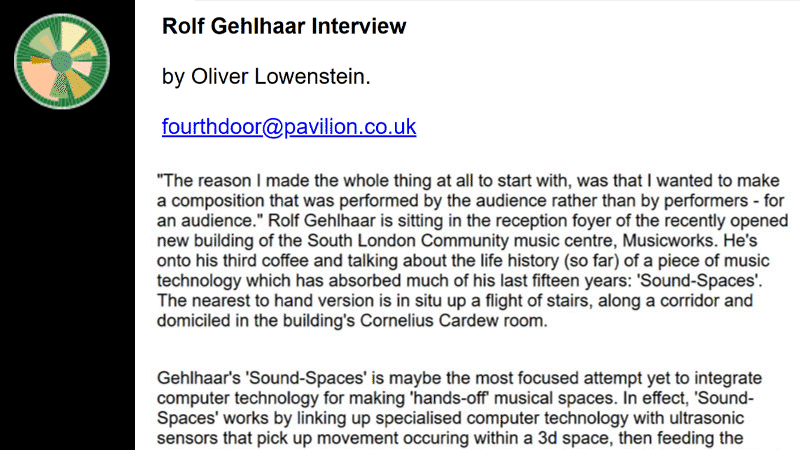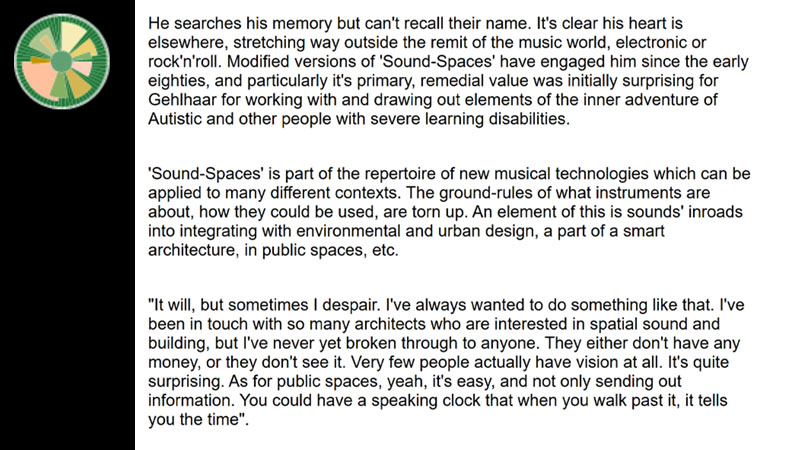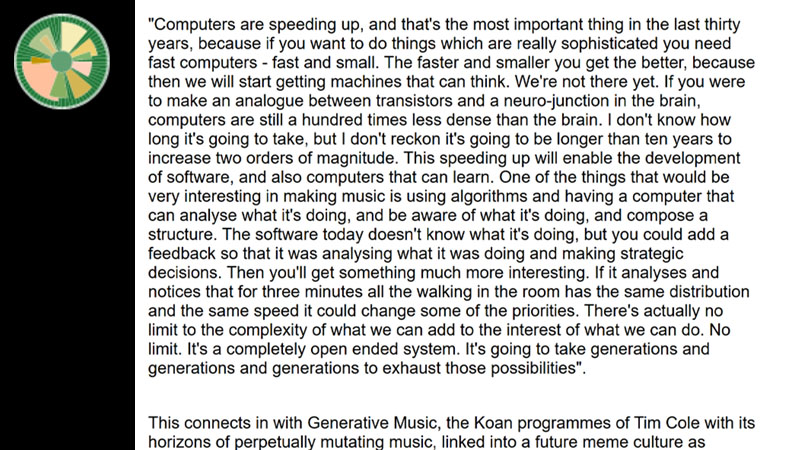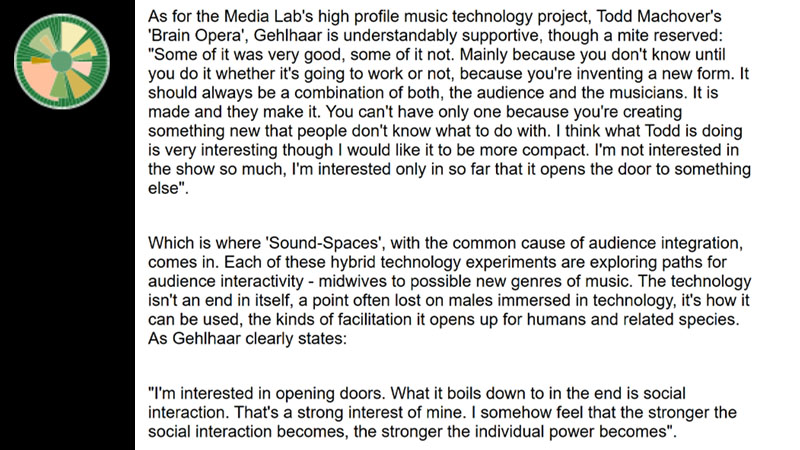"'The reason I made the whole thing at all to start with, was that I wanted to make a composition that was performed by the audience rather than by performers - for an audience.' Rolf Gehlhaar is sitting in the reception foyer of the recently opened new building of the South London Community music centre, Musicworks. He's onto his third coffee and talking about the life history (so far) of a piece of music technology which has absorbed much of his last fifteen years: 'Sound-Spaces'. The nearest to hand version is in situ up a flight of stairs, along a corridor and domiciled in the building's Cornelius Cardew room.
Gehlhaar's 'Sound-Spaces' is maybe the most focused attempt yet to integrate computer technology for making 'hands-off' musical spaces. In effect, 'Sound-Spaces' works by linking up specialised computer technology with ultrasonic sensors that pick up movement occuring within a 3d space, then feeding the shape of those movements back to a computer programme. The (already written) programme generates sounds determined by the person's movements. Any person can enter the 'Sound-Space' and move, dance, and sculpt 'hands-off' sound without needing the skills associated with playing 'hands-on' instruments. People who hitherto needed specialised bodily dexterity to create and make music, are able to make sound and music through their movements. The 'Sound-Space' is also an innovative space for other musicians, particularly though, in collaboration, with dancers." -- excerpt from Rolf Gelhaar Interview, frAme, Issue 3, 2000
Oliver Lowenstein . . . runs Fourth Door Review, the green cultural and new media magazine. He writes for a number of other journals and also co-ordinates 'the Cycle-Station Project', a green design and transport project. He is working on various books . . . and teaches part-time at Falmouth College of Art." -- from About the Contributors, frAme, Issue 3, 2000
1 COPY IN THE NEXT
Published in 2000 by frAme in Issue 3.
Nottingham Trent University, with the permission of Sue Thomas, gave this copy of the work to the Electronic Literature Lab in Spring 2016.
PUBLICATION TYPE
Online Journal
COPY MEDIA FORMAT
Web



